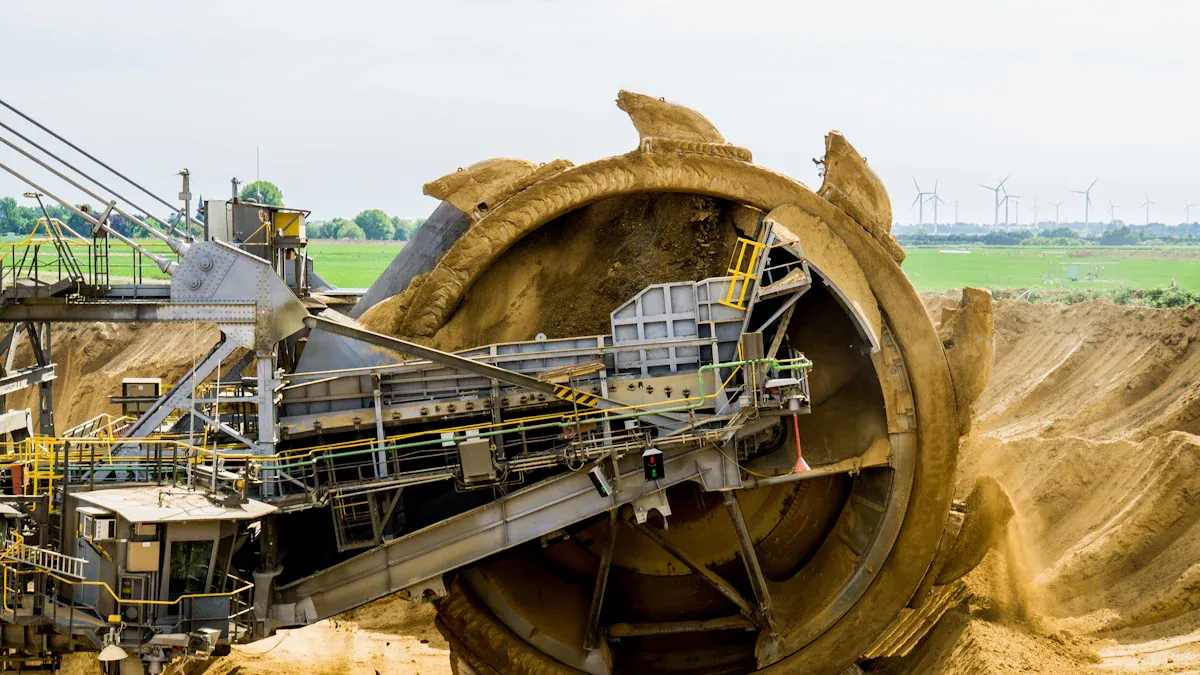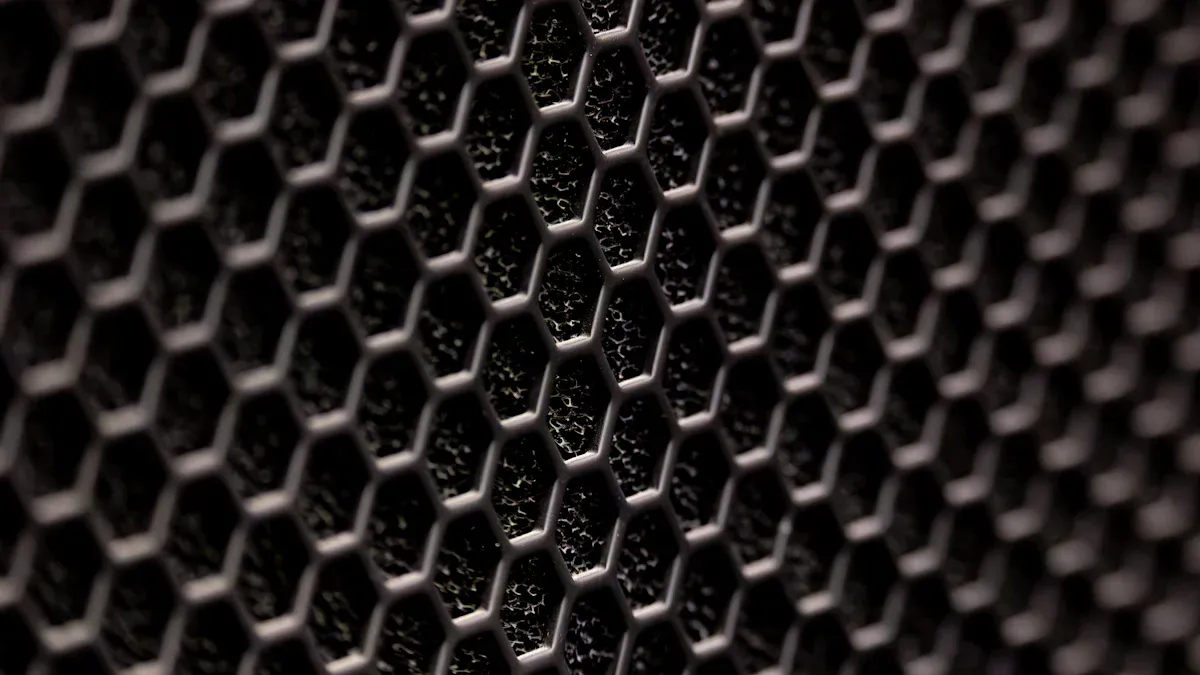
High chromium cast iron stands out for its exceptional wear resistance and durability, making it a top choice for jaw plates in a Jaw Crusher Machine. This material’s unique properties allow it to outperform alternatives like Manganese Steel. For instance, high chromium cast iron consistently ranks high in various abrasion tests, demonstrating superior performance in applications such as jaw crushers and Rock Crusher Parts. Its microstructure plays a crucial role in this, contributing to hardness levels between 1300 HV and 1800 HV, essential for resisting wear, especially when compared to Manganese Steel Plate.
Key Takeaways
- High chromium cast iron offers exceptional wear resistance, making it ideal for jaw plates in crushers.
- The unique microstructure of high chromium cast iron enhances its hardness and durability, outperforming manganese steel.
- Investing in high chromium cast iron can lead to long-term cost savings due to its extended service life and reduced maintenance needs.
- Regular inspections and a proactive replacement schedule can maximize the lifespan of high chromium cast iron jaw plates.
Properties of High Chromium Cast Iron

Composition and Microstructure
High chromium cast iron is known for its unique chemical composition, which significantly contributes to its performance in jaw plates. The typical grades of high chromium cast iron used in these applications include ICHH28I2, ICHH15M3, and ICHH14G2N. Each grade has a specific range of elements that enhance its properties. Here’s a quick look at their chemical makeup:
| Grade | C (%) | Mn (%) | Si (%) | Cr (%) | Ni (%) |
|---|---|---|---|---|---|
| ICHH28I2 | 2.7 – 3.0 | 0.8 – 1.4 | 0.5 – 0.8 | 28 – 30 | 1.5 – 3.0 |
| ICHH15M3 | 3.0 – 3.5 | 0.3 – 0.6 | 0.5 – 0.9 | 12 – 18 | - |
| ICHH14G2N | 2.0 – 2.4 | 0.5 – 0.7 | 1.8 – 3.2 | 13 – 15 | 1.2 – 2.0 |
The microstructure of high chromium cast iron plays a crucial role in its performance. It typically features a transformation from austenite to martensite, which enhances hardness and wear resistance. Additionally, the presence of chromium carbides provides extra durability against abrasive wear. Heat treatment further optimizes these microstructural characteristics, ensuring that the material can withstand the demanding conditions of jaw plate applications.
Interestingly, post-wear evaluations of jaw plates made from high chromium cast iron reveal various surface and subsurface damage effects. These include plastic deformation and the formation of deformation-induced martensite, showcasing how the material performs under stress.
Hardness and Wear Resistance
When it comes to hardness, high chromium cast iron truly shines. It typically achieves hardness values between 1300 HV and 1800 HV, making it significantly harder than many other materials used for jaw plates. For comparison, here’s a look at the Rockwell hardness of some common materials:
| Material | Rockwell Hardness |
|---|---|
| ABRADUR 64 | value |
| WC | value |
| HARDOX 400 | value |
This exceptional hardness translates directly into superior wear resistance. High chromium cast iron outperforms high manganese steel in this regard, making it a preferred choice for applications where wear is a critical concern.
Advantages of High Chromium Cast Iron Over High Manganese Steel

Enhanced Durability
High chromium cast iron offers remarkable durability, making it a standout choice for jaw plates. Its unique composition allows it to withstand harsh conditions better than high manganese steel. Research shows that increasing the chromium content in high chromium cast iron significantly enhances wear resistance. This improvement stems from a refined microstructure and the formation of hard carbides, which provide additional strength.
Here’s a summary of findings from various studies that highlight the durability of high chromium cast iron:
| Study Focus | Findings |
|---|---|
| Chromium Content | Higher chromium levels improve wear resistance due to enhanced carbide formation. |
| Austenitic Matrix | High-chromium white cast iron with an austenitic matrix shows superior wear resistance through strong work hardening. |
| Heat Treatment | Alloys with higher chromium content demonstrate improved abrasive wear resistance after heat treatment. |
| Chemical Composition | The wear resistance of high chromium-high carbon cast irons is influenced by their chemical makeup and carbide distribution. |
These studies confirm that high chromium cast iron can outperform high manganese steel in terms of durability, making it a reliable option for demanding applications.
Cost-Effectiveness
When it comes to cost-effectiveness, high chromium cast iron presents a compelling case. Although the initial investment might be higher, the long-term savings can be substantial. Jaw plates made from high chromium cast iron often last longer than those made from high manganese steel. In fact, some reports suggest that a composite jaw plate combining both materials can increase service life by more than three times.
Consider these points regarding cost-effectiveness:
- High chromium cast iron provides high wear resistance, which translates to fewer replacements.
- While high manganese steel is known for its toughness, it may not last as long under extreme wear conditions.
- The durability of high chromium cast iron can lead to reduced downtime and maintenance costs.
By choosing high chromium cast iron, companies can optimize their operational efficiency and reduce overall expenses.
Specific Applications of High Chromium Cast Iron
Mining and Quarrying
High chromium cast iron finds extensive use in mining and quarrying due to its exceptional wear resistance. This material excels in crushing highly abrasive materials like granite and basalt. Here’s a quick look at how it compares to manganese steel in these applications:
| Material Type | Application |
|---|---|
| High Chrome Iron | Crushing highly abrasive materials like granite and basalt in mining and quarrying operations. |
| Manganese Steel | Used for large and abrasive materials in similar applications. |
Studies show that high chromium cast iron jaw plates outperform their manganese counterparts in abrasive environments. For instance, one study titled “Performance Evaluation of High-Chromium White Cast Irons Dual-Reinforced by Niobium Carbides” found that dual-reinforced materials exhibit improved wear performance. This makes high chromium cast iron a reliable choice for demanding mining tasks.
Recycling and Waste Management
In recycling and waste management, high chromium cast iron also shines. Its properties make it ideal for handling tough materials. Here are some key benefits:
- Extreme Hardness: Achieves up to 60 HRC, providing superior resistance to abrasive wear in harsh conditions.
- Outstanding Abrasion Resistance: High chromium content forms hard carbide phases, ensuring prolonged service life in shredder housings and balers.
- Impact Tolerance: Balanced toughness prevents cracking under moderate impact loads.
- Corrosion Resistance: Chromium enhances durability in corrosive environments, ideal for recycling and waste processing.
- Cost Efficiency: Long-lasting wear plates reduce maintenance costs and downtime, maximizing operational efficiency.
Recent advancements in technology have further improved the performance of high chromium cast iron. Innovations in heat treatment processes minimize brittleness while enhancing hardness. Composite designs that combine high chromium cast iron with high-manganese steel offer improved toughness and wear resistance.
Performance Comparison: High Chromium Cast Iron vs. High Manganese Steel
Wear Rate Analysis
When comparing wear rates, high chromium cast iron consistently outperforms high manganese steel. Laboratory tests reveal significant differences in how these materials handle abrasive conditions. For instance, a pin on abrasive disc test showed that high chromium cast iron exhibits a lower mass loss when subjected to alumina of varying sizes. The findings indicate that the wear rate is closely linked to the surface hardness of the material.
Here’s a summary of the test results:
| Test Type | Findings |
|---|---|
| Pin on abrasive disc | Higher hardness leads to reduced mass loss at a cooling rate of 15 °C/s. |
| Scanning electron microscopy | Worn surfaces show mechanisms like microcutting and microploughing. |
Additionally, high chromium cast iron demonstrates excellent performance in various abrasion tests, including:
- Dry-sand, rubber-wheel three-body abrasion
- Pin-on-drum two-body abrasion
- Jaw crusher high-stress gouging-abrasion
- High-speed, impeller-tumbler impact-abrasion
These results confirm that high chromium cast iron is a superior choice for applications requiring high wear resistance.
Impact Resistance
Impact resistance is another critical factor in choosing materials for jaw plates. High manganese steel excels in this area, making it the traditional choice for applications involving significant impact loads. In contrast, high chromium cast iron, while offering excellent wear resistance, shows lower toughness. This can lead to suboptimal performance under high-impact conditions.
Here’s a comparison of the two materials:
| Property | Manganese Steel | High Chrome Iron |
|---|---|---|
| Impact Resistance | Excellent | Poor |
| Toughness | Excellent | Low |
| Wear Resistance | Good | Excellent |
Case Studies: High Chromium Cast Iron in Action
Successful Implementations
High chromium cast iron has proven its worth in various industries. Companies have successfully adopted this material for jaw plates in challenging environments. For example, a leading mining operation switched to high chromium cast iron jaw plates after experiencing frequent wear issues with manganese steel. The results were impressive. They reported a significant reduction in downtime and maintenance costs.
Another notable case involved a recycling facility that faced challenges with abrasive materials. By implementing high chromium cast iron jaw plates, they improved their processing efficiency. The durability of these plates allowed them to handle tough materials without frequent replacements. This transition not only enhanced productivity but also contributed to cost savings.
Performance Metrics
To evaluate the effectiveness of high chromium cast iron jaw plates, several performance metrics come into play. These metrics help companies assess how well the material performs in real-world applications. Here’s a quick overview of some key metrics:
| Metric | Description |
|---|---|
| Hardness | Measures the ability of a material to resist deformation. |
| Abrasion Resistance | Indicates how well a material withstands persistent wear in operation. |
| Hardness Range | High-chrome cast irons typically exhibit a hardness range of 600 to 700 HB. |
These metrics highlight the advantages of high chromium cast iron. The hardness ensures that the jaw plates can endure heavy loads without deforming. Meanwhile, the abrasion resistance guarantees longevity, even in abrasive environments. Companies that have adopted this material often report improved performance metrics, leading to enhanced operational efficiency.
High chromium cast iron proves to be an excellent choice for jaw plates due to its outstanding properties and performance. This material not only enhances durability but also significantly impacts operational efficiency and cost savings. Companies can benefit from investing in high-quality, wear-resistant liners and jaw plates. By developing a proactive replacement schedule and regularly inspecting wear components, they can avoid unplanned downtime.
In summary, choosing the right material can lead to better productivity and lower maintenance costs.
FAQ
What is high chromium cast iron?
High chromium cast iron is a type of cast iron that contains a significant amount of chromium. This composition enhances its hardness and wear resistance, making it ideal for applications like jaw plates in crushers.
How does high chromium cast iron compare to manganese steel?
High chromium cast iron offers superior wear resistance compared to manganese steel. While manganese steel is tough and impact-resistant, high chromium cast iron excels in abrasive environments, leading to longer service life.
What are the main benefits of using high chromium cast iron for jaw plates?
The main benefits include enhanced durability, excellent wear resistance, and cost-effectiveness. These properties lead to fewer replacements and reduced maintenance costs, improving overall operational efficiency.
In which industries is high chromium cast iron commonly used?
High chromium cast iron is commonly used in mining, quarrying, recycling, and waste management. Its ability to withstand harsh conditions makes it suitable for handling abrasive materials in these industries.
How can companies maximize the lifespan of high chromium cast iron jaw plates?
Companies can maximize lifespan by implementing a proactive replacement schedule and regularly inspecting wear components. Proper maintenance and timely replacements help avoid unplanned downtime and enhance productivity.
Post time: Nov-06-2025